Yoruba Culture x Osun Osogbo Sacred Groove
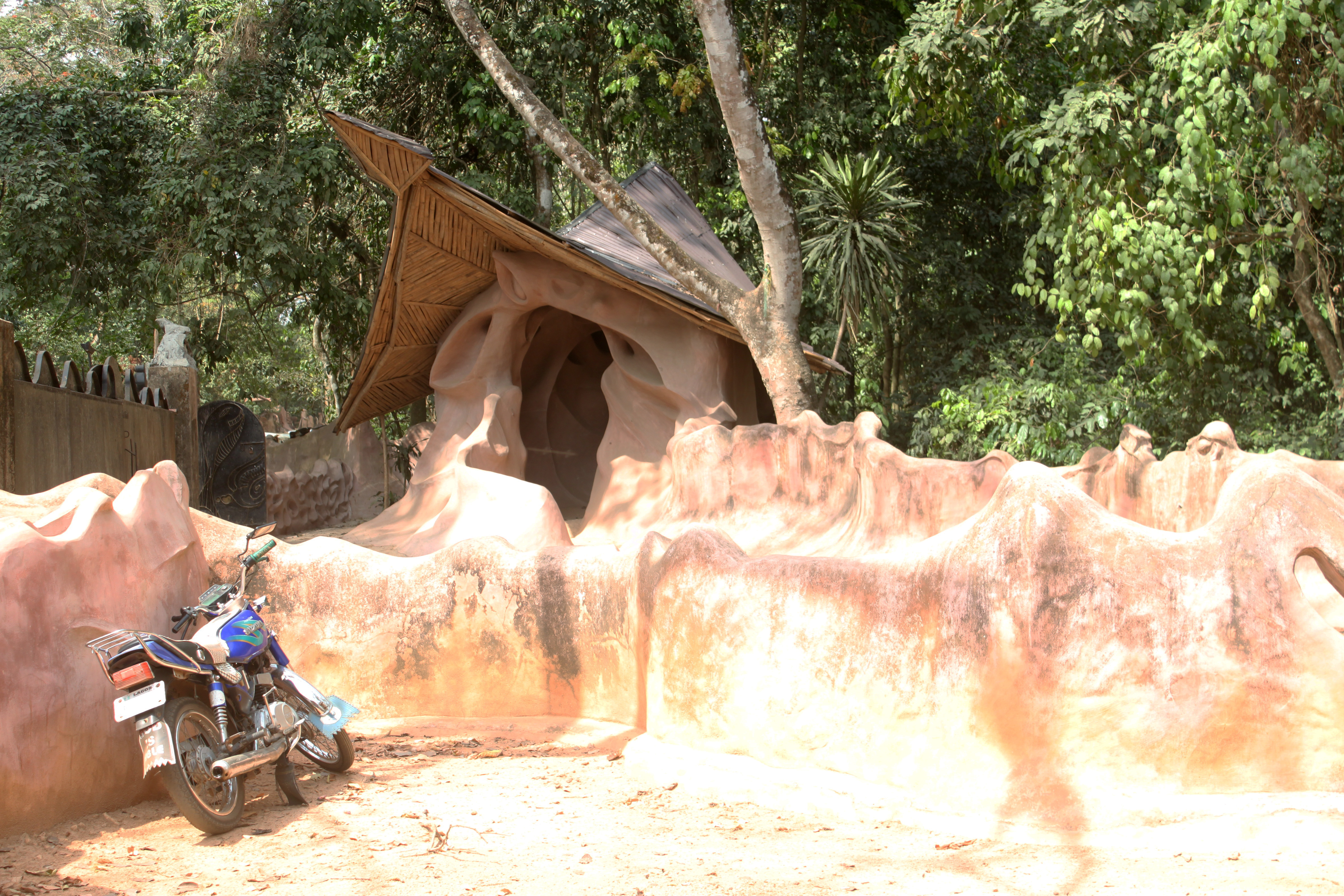
I grew up knowing the gods of the Yoruba culture just as I learned the language and part of what made knowing them great is the storytelling that came with each god. Sango being the god of lightning, thunder and fire that breathes fire when angry and husband to several other wives, Osumare the rainbow god, Yemoja the goddess of all living things and many others. It was educative hearing the tales in Yoruba class and personal research, some of which portray them as being almost as human as we are although they had superhuman abilities. The Osun Osogbo sacred groove happens to be home to Osun, the goddess synonymous to water and fertility.
The history of the Yoruba culture is one of the richest in Nigeria if the not the whole of Africa and is conveyed from generation to generation through word of mouth mostly. The Yoruba people themselves amount to over 40 million presently. The Yoruba tribe stems from Ile-Ife, the bedrock of Yoruba history. At the turn of the century, there have been major strides to preserve culture and the Yoruba culture is one whose preservation is very key.
My sojourn through life landed me in Osun Nigeria back in February and I made it down to the Osun Osogbo sacred groove and Nike Art Gallery, Osogbo. Pribodunke wrote about the Lagos branch of the gallery in her post here. Unfortunately, we were not permitted to take pictures there so I have nothing to show for that except the beautiful artwork in my memory.
The Osun Osogbo sacred groove is pretty easy to locate if you’re conversant with the Osogbo environs. For a visitor, Google Maps will come in really handy. Right from the gate of the groove, you’ll see one or two or a dozen monkeys swinging from trees. The place is a home to them apparently and some of them are friendly and will pose for the camera.
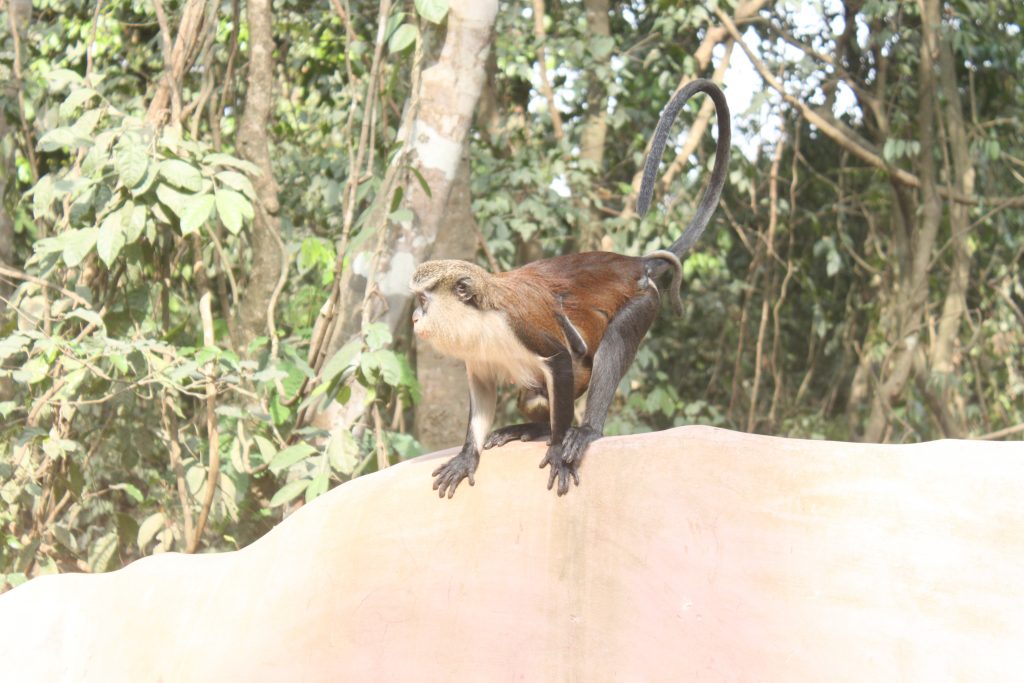

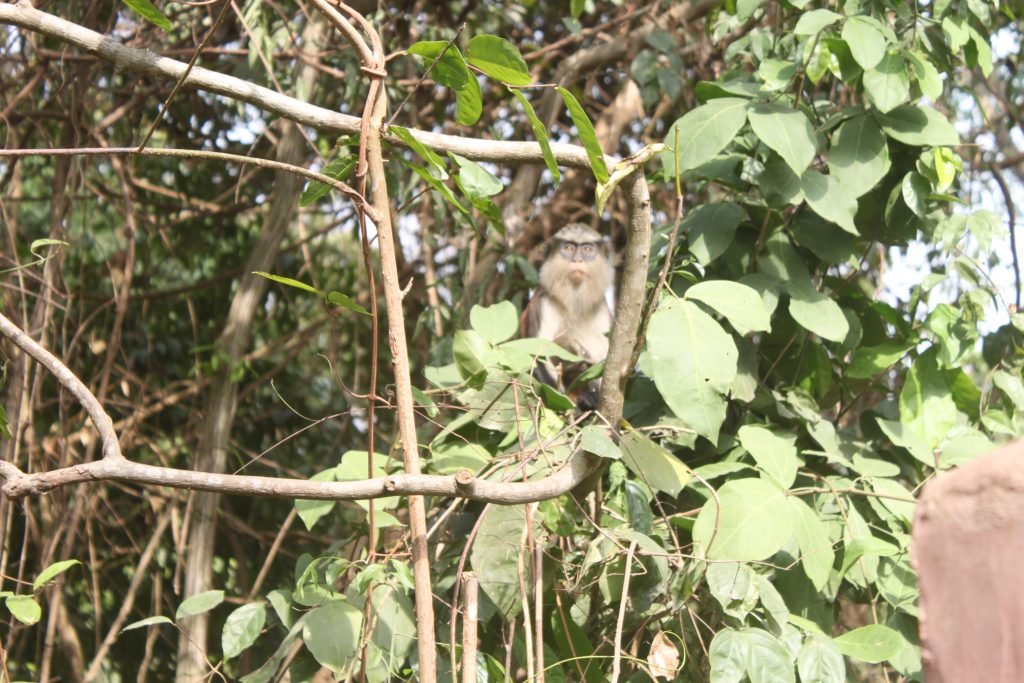
Reaching the main entrance of the groove, the ancient architecture will have you bedazzled. You’ll be directed to a sort of reception area where you pay to enter the groove. The gate fee for students is 200 naira and non-students is 500 naira while for foreigners is 1,000 naira. Phone cameras cost 1,000 naira to take in and digital cameras attract the charge of 2,000 naira. I must honestly say there isn’t much to do at the groove, but the sculptures and architecture will have you wowed as well as the history behind the place. A tour guide will accompany you and tell the story of the groove as you go from one end to the other.
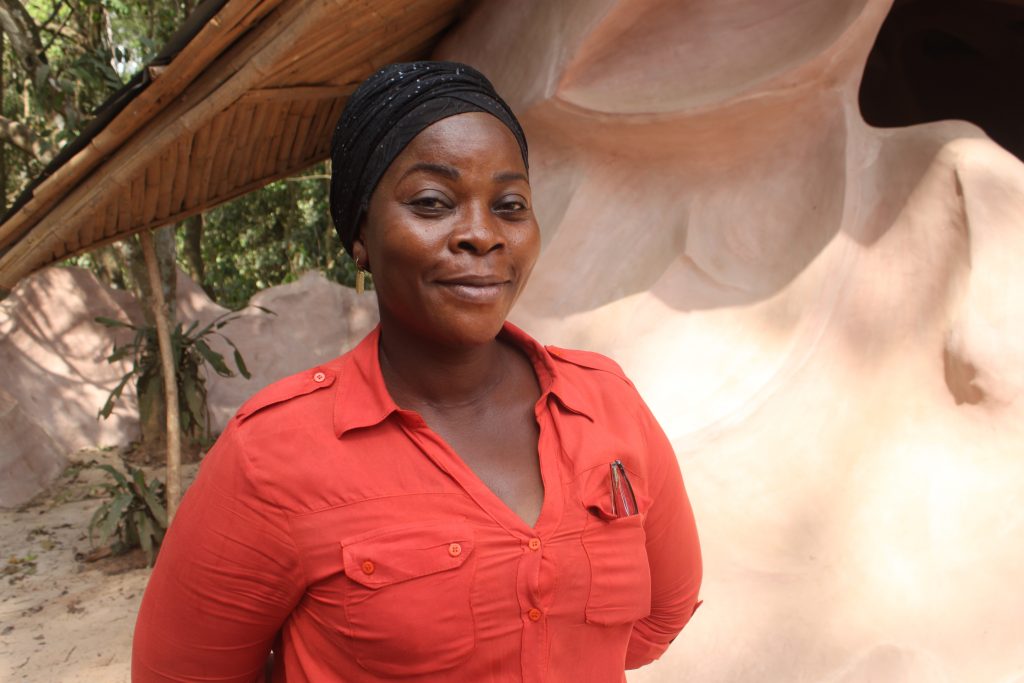
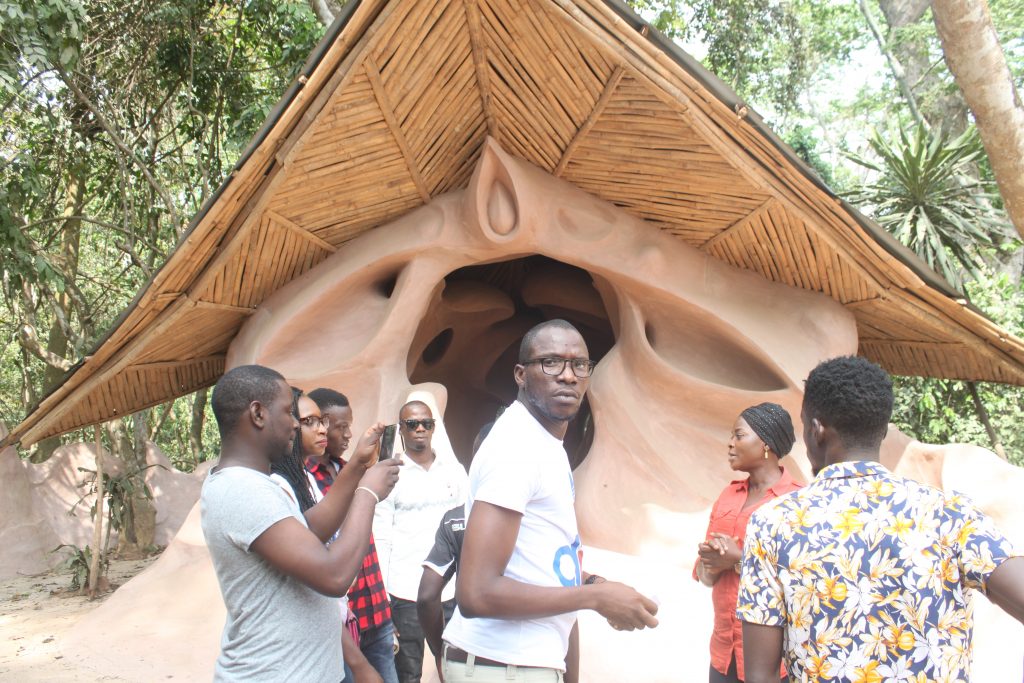
There are various wood and stone sculptures to see. Most of the sculptures there were done by Susanne Wenger who is a late White artist that visited the Osun Osogbo sacred groove and fell in love with the place. She divorced her husband then and moved permanently to Nigeria, got married to a traditional drummer and became an Osun worshiper.
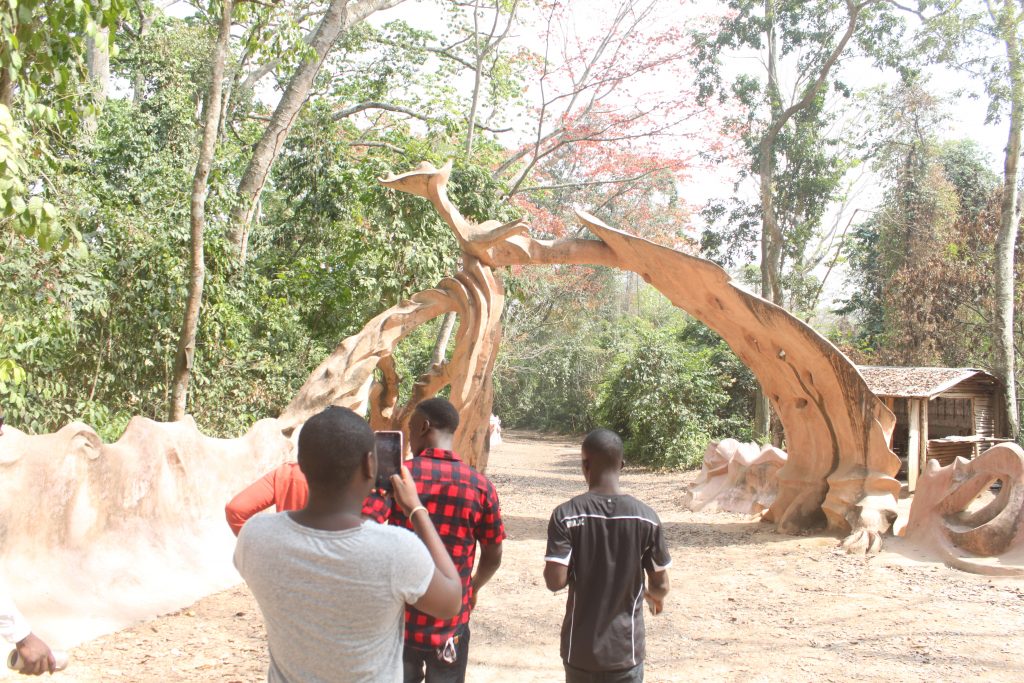
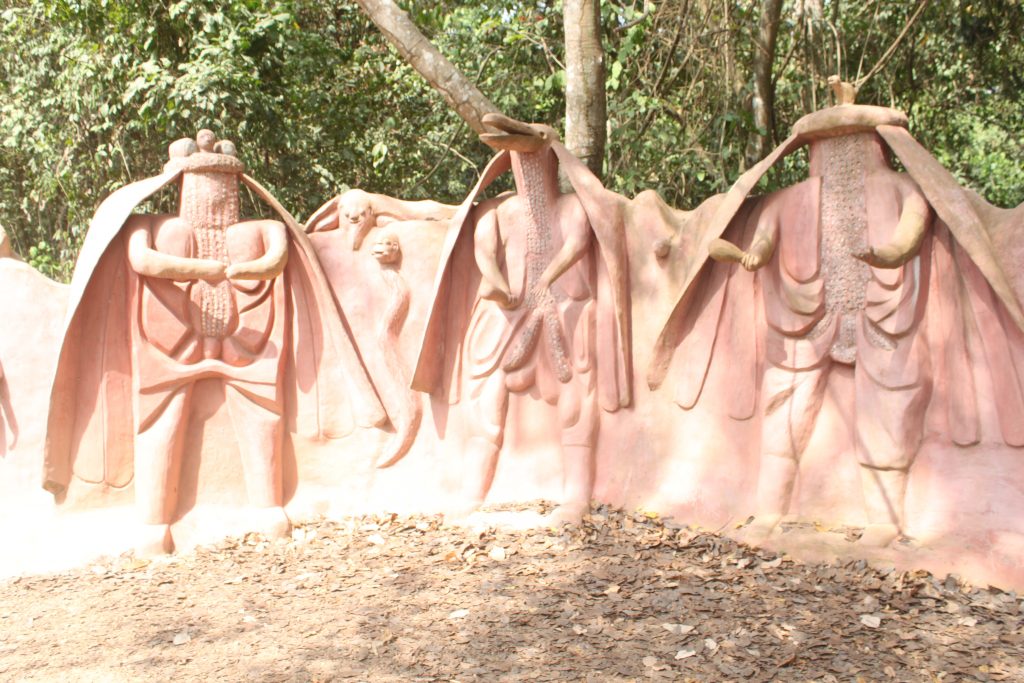


There are certain paths in the groove visitors are not permitted to go through because they’re sacred. A section of the groove houses some Osun worshipers. Reaching that section, they will pray for you and you can choose to give them money as appreciation. Close to the huts is the riverside by which the Osun Osogbo festival holds. The water there is called “Agbo” that is “Herb” and it actually does not look like clear water. People come from near and far for this water as it is believed to have medicinal value and for those wanting children, the goddess Osun being the god of fertility will help bring forth children.
Agbo l’Osun fin wemo re ki dokita o too de.
(Osun treats her child with Agbo before the doctor’s arrival)

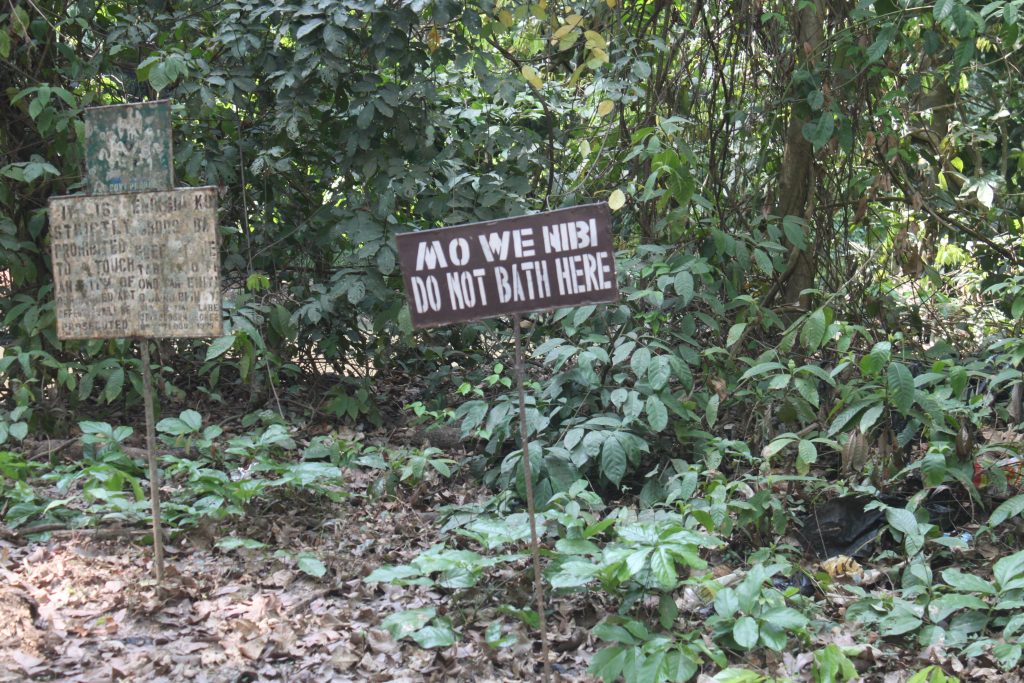
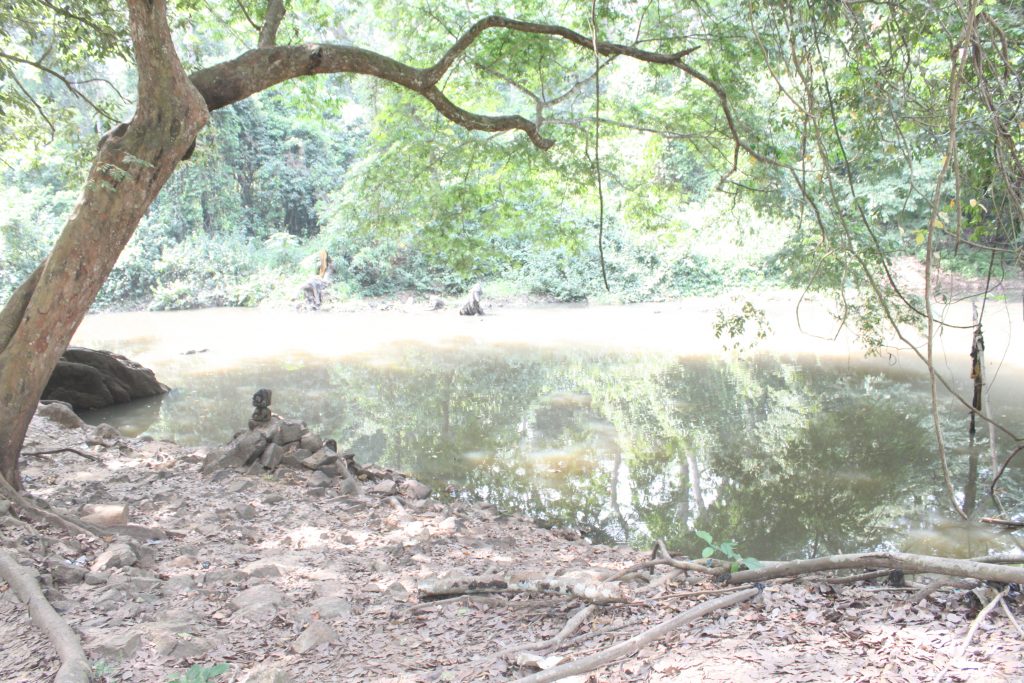
From the riverside, you’d proceed to another section of the groove which has a bridge which used to be a passage to other side of Osogbo. However, it is not functional anymore to restrict movement in the heritage site. The bridge is rather quite shaky and one of the tourists in our group was jumping up and down on it at some point, having the rest of us pray the bridge would not give way under us.

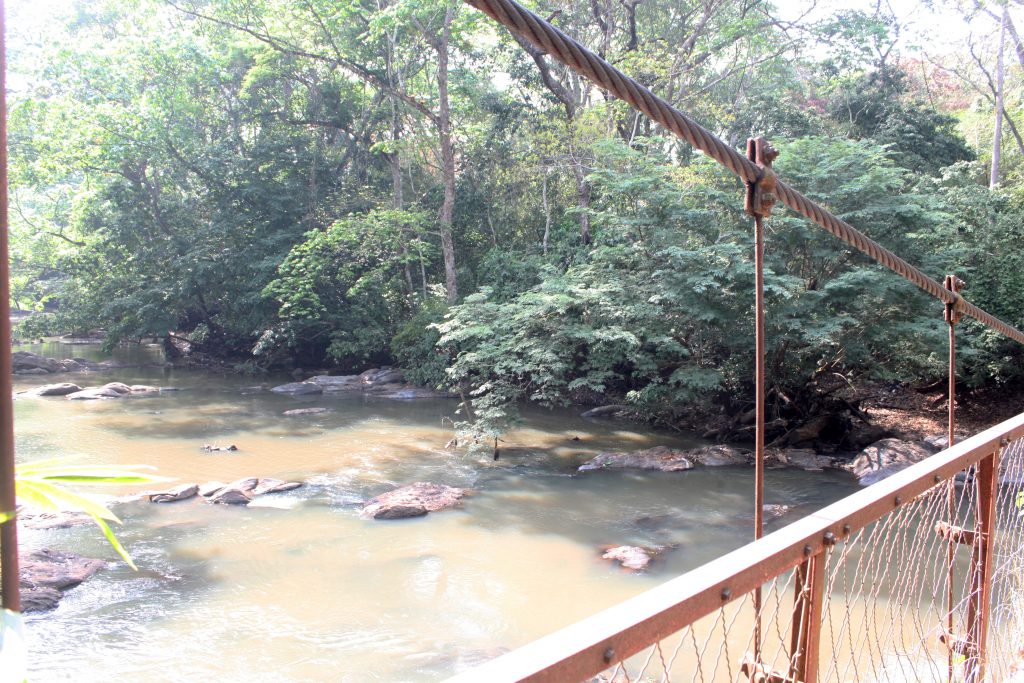
The Osun-Osogbo festival holds for two weeks in August every year and has multitudes from all over the world flocking to the groove to celebrate the goddess. It lasts for two weeks and starts with cleansing of the town followed by lighting of a 16-point lamp called “Ina Olojumerindinlogun”.
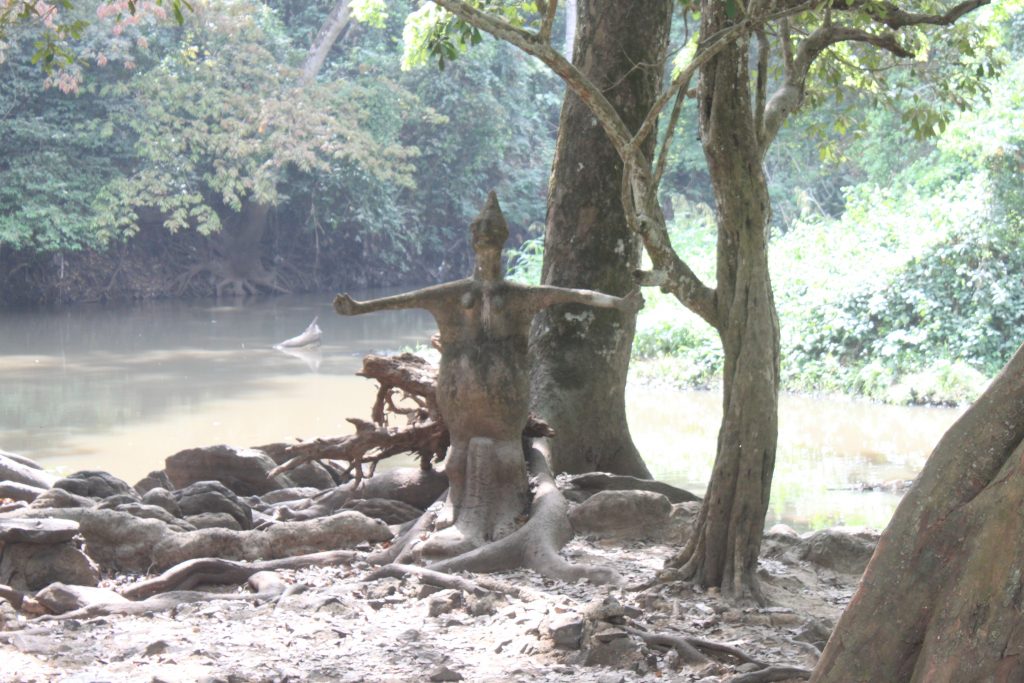
The Osun Osogbo sacred groove is best visited with friends or family as it really is fun that way. It can be one of the fun places to visit in Osogbo. As I said early, there isn’t much to do there but to learn about and appreciate the history of the place. It is an experience everyone should have as it will really help with culture appreciation. What are some of your favorite heritage sites in Nigeria? Is culture preservation important or not? Do share your thoughts about this post below.
Note:
All the pictures from this blog post were taken by the owners of Lifeofdammy.com and may not be used by anyone or business or brand without permission.

Good read!
Thank you!